In 1889, shortly after the United States opened Sanibel Island to homesteading claims, Rev. George O. Barnes and his family moved to 160 acres near the island’s lighthouse at Point Ybel. The Barnes’ home was the beginning of Casa Ybel, one of Southwest Florida’s most beloved resorts. While the resort is still being rebuilt following the destruction of Hurricane Ian, its rich history is ripe for a visit.
(Postcard image, c. 1938, from Sanibel Public Library Digital Collection)
Barnes was born in Paint Lick, Ky., in 1827 to a minister father and was educated in theology at Princeton. A missionary for the Presbyterian Church, he married Jane Cowan in 1854 and whisked her off to India. Their three children, Marie, Georgia, and Will, were born there, before illness forced Barnes back home.
Soon he struck on a big idea: “God is Love and nothing else.” This was heresy to his doctrine-addicted superiors and to many of those to whom he preached. But he kept at it, taking his message to the British Isles, to the mountains of Kentucky, and to packed halls in big cities.
The New York Times reported in 1882 that the “Mountain Evangelist” Barnes, accompanied by his two daughters singing and playing instruments, held revival after revival at Clarendon Hall in New York City, preaching against the idea of an angry, vengeful God.
(Rev. George O. Barnes, c. 1883)
Barnes later teased that his enemies made a big sport of pitying his wife and daughters, calling them, “those pore girls,” as though they were “joined to an iron will on the part of Old Barnes. And they give O.B. the credit of dragging them around the country, protesting, but impotent to resist him.”
A romantic myth later sprang up that the family shipwrecked on the island, rather than hearing about available land and going to check it out. But as soon as Barnes saw the lighthouse he envisioned the church he would build near it, one with a cross tall enough for sailors to see.
(Church of the Four Gospels on the Casa Ybel site, from Florida’s Vanishing Era)
After their first winter in Sanibel, the Barnes family returned to Kentucky. Before they left the island, Barnes wrote this to his hometown newspaper:
“Beautiful Sanibel… We have had a grand good time homesteading here, and I fully believe that this change has added years to my earthly life.”
They returned the next winter and with the help of Georgia’s husband, Edward Duncan, built the Sisters Hotel and a Gothic-style Church of the Four Gospels. Edward and Georgia Duncan built their own home, Thistle Lodge, which later became part of the hotel.
(Thistle Lodge, c. 1924, from Sanibel Public Library Digital Collection)
In 1903, Will, Edward, and the sisters took over hotel operations and eventually rebranded it as Casa Ybel. Cottages on the property welcomed back the same families year after year.
Jane Barnes died in 1905 and George in 1908. They were originally buried on Sanibel, but Will later had them reinterred at the family plot in Danville, Ky. Barnes’ church building was destroyed in the 1910 hurricane.
(Visitors to Casa Ybel in their Sunday best, 1908, from the Tayntor family collection at Sanibel Public Library Digital Collection)
Knapp takes charge
Charles J. Knapp and his wife, Bess, moved to Captiva in the early 1920s, looking for a hotel property on the barrier islands. They purchased Casa Ybel from the Barnes family partnership around 1924, and with the help of investment partners, completely remodeled it, looking to make a big splash with the resort.
(Postcard image, Sanibel Public Library Digital Collection)
In 1925, all was sunny in Knapp’s world. He ferried guests to and from Casa Ybel on his yacht Kingfish, hosted the Philadelphia Athletics for a day, and entertained the most prominent members of Fort Myers society.
Then came a hurricane in September 1926.
The property was “destroyed,” the newspaper reported. The Kingfish sank while tied up near Punta Rassa. Knapp told a hotel trade journal years later that almost all the cottages had been blown from their foundations, and that his immediate instinct was to walk away. Instead, he and Bess had the resort up and running again within a few months. They added another property, Green Lawn Lodge in Captiva, which Bess ran.
(Postcard image)
In late 1945, Charlie Knapp sold the resort to the Howard Dayton Co., which was buying hotels across the state. The Knapps moved to Fort Myers, with Charlie telling the newspaper he intended to loaf around and enjoy himself. But island life kept calling, and retirement wasn’t Knapp’s thing. The couple moved back to Captiva, where Charlie held a job at South Seas Plantation well into his 80s.
(Postcard image, c. 1945, Sanibel Public Library Digital Collection)
The Casa Ybel property flipped a couple of times in the 1970s. The company that bought it in 1977 found the original Thistle Lodge too far gone to save and razed it. When the property was renovated, the owners created a restaurant, Thistle Lodge, whose architecture and interior were an homage to the gingerbread construction of the original.
For information and updates about the resort, visit www.casaybelresort.com.
(Casa Ybel by Southwest Florida artist Myra Roberts; purchase prints at www.myraroberts.com)


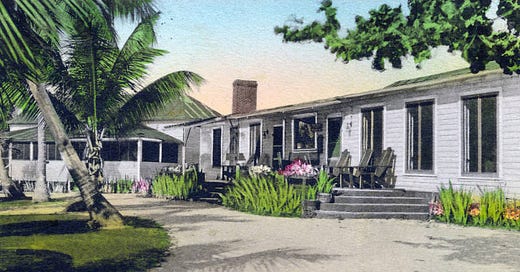



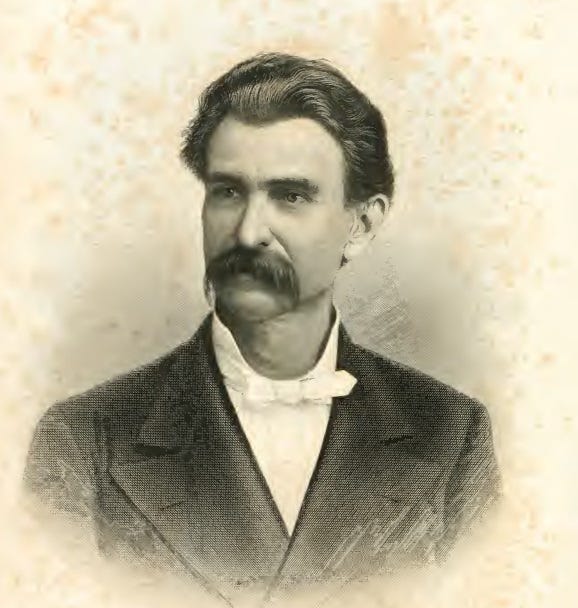

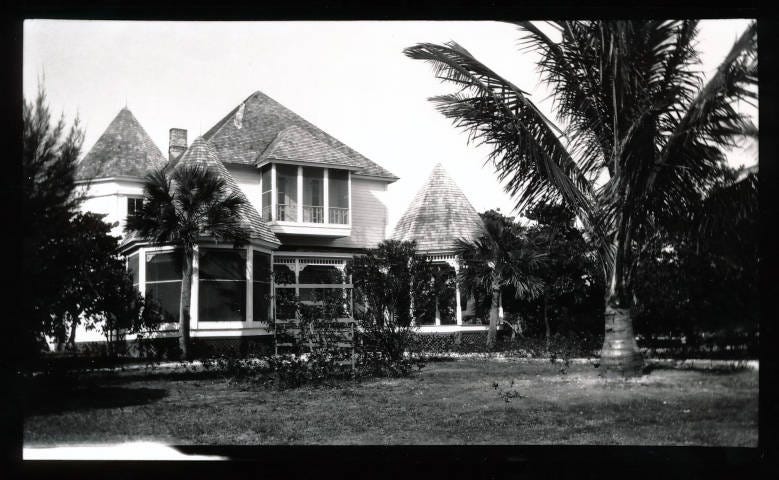
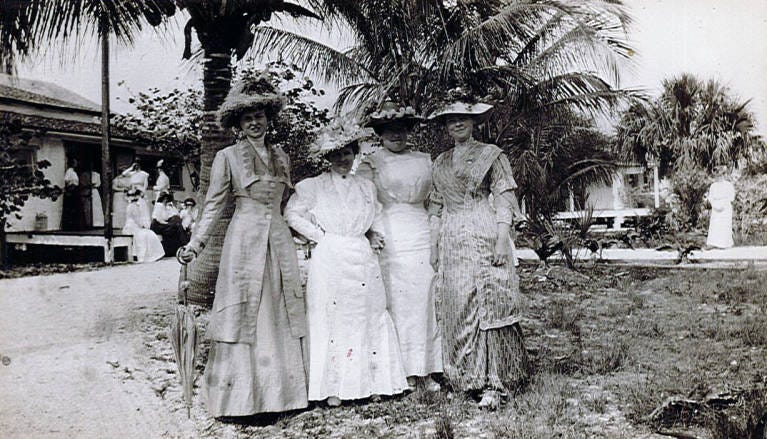
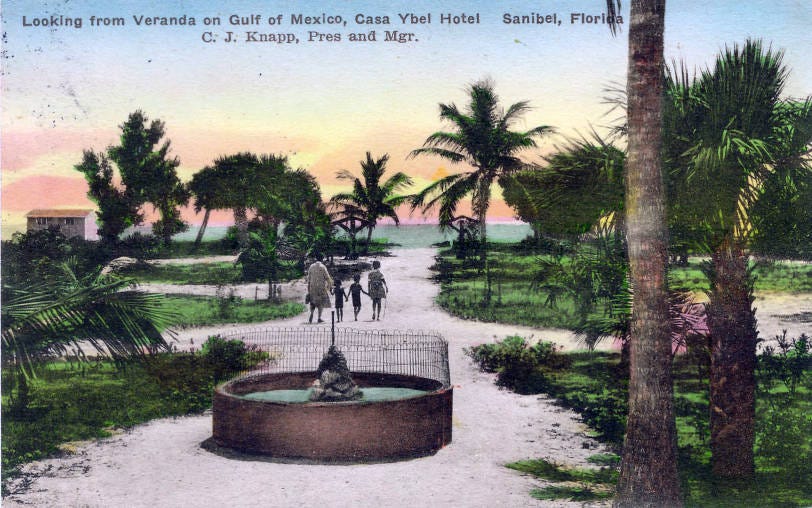

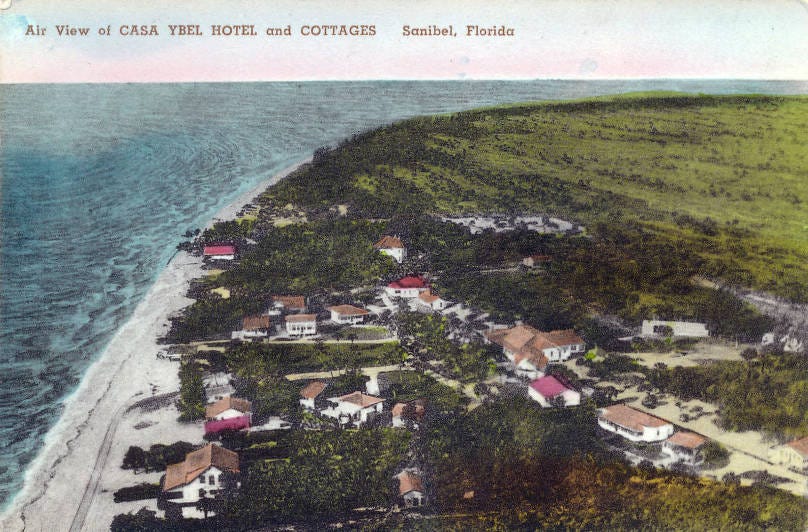
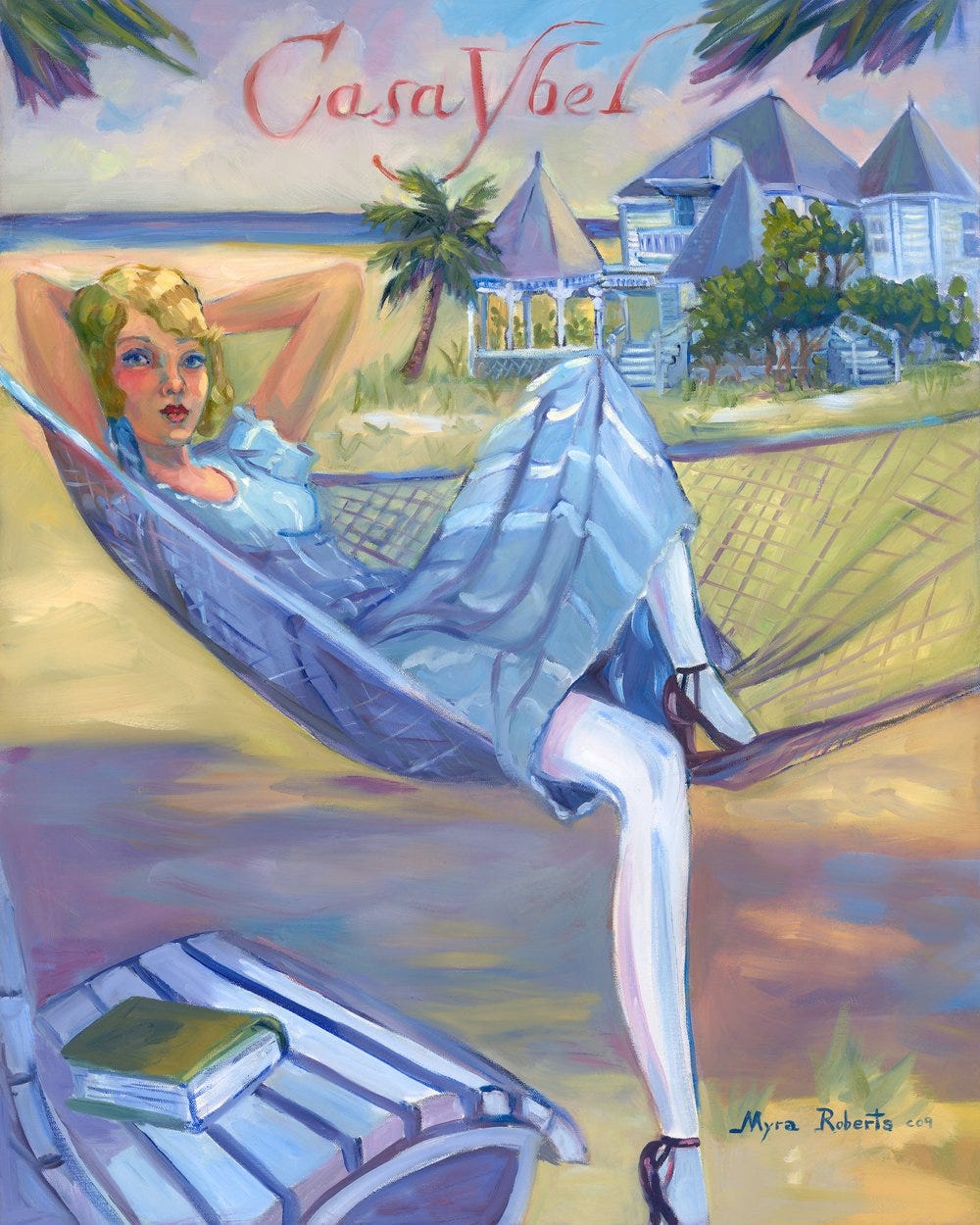
I super love this!! I love a benevolent god! (In concept.) Also this reminds me a bit of the show Bloodline, which I really dug. I met Sissy Spacek at a wedding and got to tell her in person. But first I had to realize it was not a lookalike I was seeing. It really was shocking to run into her at a backyard wedding.